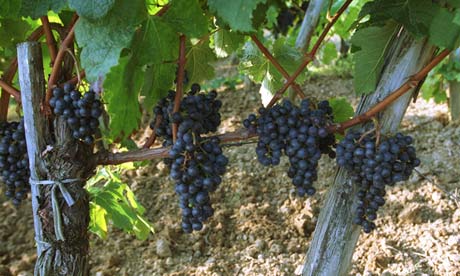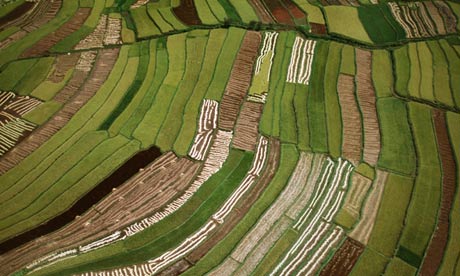October 3, 2013 — by Lisa Palmer
The French know a thing or two about wine. But in the not too distant future, some French wines might not come from their namesake regions.
That’s because climate change is altering growing conditions in wine-producing regions, and grape production long associated with regions further south is beginning to shift to new areas.
“Climate change will produce winners and losers among wine-growing regions, and for every region it will result in changes to the alcohol, acid, sugar, tannins and colour in wine,” says climate scientist and wine expert Antonio Busalacchi of the University of Maryland.
Vineyards are now taking action. The wine sector of France is buying up land in places like southern England as it confronts the need simultaneously to reduce risks of yield losses and continue to produce the world’s leading wines.
“Given that most grapevines produce fruit for 25 to 50 years, grape-growers and wine-makers must consider the long term when determining what to plant, where to plant, and how to manage their vineyards,” says Busalacchi, who directs Maryland’s Earth System Science Interdisciplinary Center.
While the effects of climate change are being felt, Busalacchi says it is misleading to take a snapshot of any one year or season. “One needs to take a long-term time horizon view of this,” he adds.
Over the past four years, England has experienced a boom in the number of hectares that are producing the main grapes that are grown in the Champagne region of France – Chardonnay, Pinot Noir and Pinot Meunier. These three varieties now account for more than 50% of England’s total varietal plantings.
“Several Champagne houses already are looking at land in Sussex and Kent in southern England as potential sites for new vineyards because as climate warms the region is becoming more hospitable to quality grape growing,” says Busalacchi. The soil in the white cliffs of Dover is similar to the chalky substrate of Champagne, and the cost of land is 30 times less than in France.
“Climate is undoubtedly playing a part as, coupled with the international competition successes, it has led to the general growth in confidence in what we are capable of producing over here,” says Julia Trustram Eve, spokeswoman for the English Wine Producers. Acreage under vine has nearly doubled in England in the past nine years, and much of that is for the production of sparkling wine.
Warming temperatures have been noticed, she adds. “Those that planted vineyards some 25 to 30 years ago have seen a change, such as picking dates by and large starting earlier, for example,” says Eve.
The grape vine is particularly sensitive to climate variability and change, like many agricultural crops. But wine producers place much more importance on quality since temperature and precipitation affects alcohol, acidity and colour. Bordeaux and other regions in France will have a compressed growing season, and extreme events such as heat waves, which shut down photosynthesis, and hail storms, which can ruin production in a matter of minutes, will be more common, says Busalacchi. South Africa and southern Australia will see declines in wine production due to severe droughts. While South African wine producers can’t move poleward, Australian growers are looking to favourable growing conditions expected in Tasmania in the coming decades.
Some vineyards will be less affected by climate change. For instance, vineyards at higher altitudes and near the ocean will benefit from more consistent growing seasons and growing days. These include Oregon and Washington State in the US, the Mendoza Province of Argentina, and the Rhine in Germany.
So what are the options for the future? Where possible vineyards can change their orientation to a more northern-facing direction. As well, canopy management can further shade the bunches and trellis modifications can cool the canopy. Some growers can use screening to shade the vines, as some areas do, to protect grapes from birds, but this is expensive. Grapes that are genetically modified can withstand temperature and drought stress expected as the climate warms. Local appellation laws can also be changed to permit irrigation as well as warmer climate varietals, says Busalacchi.
In much of Europe, grape-growing is on small farms. The wine-growers are farmers who are at the mercy of climate and market forces. “They will always be likely to be able to grow grapes,” says Busalacchi. “The question is of what quality and what varietal.” In southwest France, overproduction is a bigger issue. Busalacchi says that in regions like Minervois and Corbières, the government is encouraging quality over quantity, “grubbing up” vines by pulling them up by the roots and replacing them with other agricultural crops, and limiting new acreage.
Are most wine producers consulting climate services for their planning? Not exactly. Despite 30 years of research on climate science, businesses are just now beginning to apply climate research to their investment decisions.
By engaging climate research to inform long-term planning, industries and communities are starting to put a value on climate services to reduce business risk.

